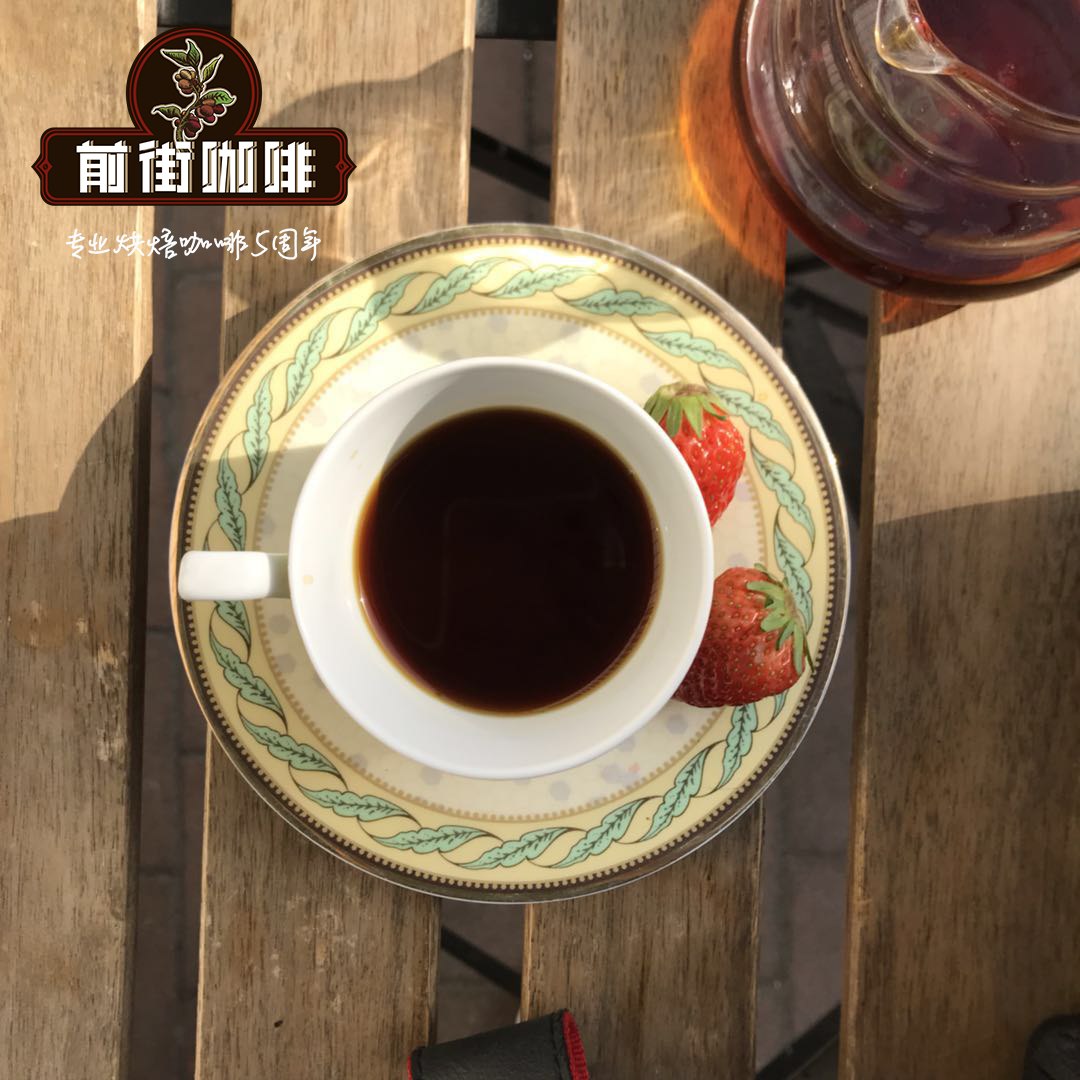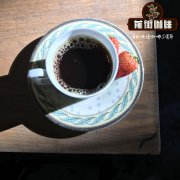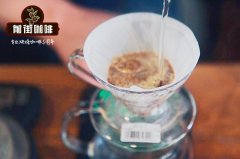A brief introduction to the taste of Arabica coffee beans

Professional coffee knowledge exchange more coffee bean information please follow the coffee workshop (Wechat official account cafe_style)
Introduction of Qianjie-Arabica Coffee varieties
We are familiar with two common varieties of coffee: Arabica and Robusta. The two varieties have many branches, such as the common tin card, bourbon, Kaddura, Kaduai and so on.
Arabica (Arabica): premium coffee beans with excellent flavor and aroma
Arabica is a representative variety of Ethiopia of origin, and it is also produced in South Africa, Africa, Asia and other countries, accounting for 70% to 75% of the world's coffee production. Arabica has weak resistance to diseases and insect pests, so the highland area is more suitable for cultivation, especially the quality of Arabica coffee beans produced in the highland above 1500 meters is the best.
The source of two ancient pure varieties of Arabica: iron pickup and bourbon.
Iron pickup / Typica
Iron pickup is the native species of all Arabica varieties. The iron pickup comes from southern Sudan and its ripe fruit is red. The yield of this variety is relatively low and its disease resistance is extremely poor, but its excellent cup test quality still makes it popular all over the world.
Iron card coffee: Rosa, Jamaica Blue Mountains, Kona, Hawaii, Elephant Bean, Sumatra Iron pickup (Manning)
Rose summer / Geisha
Rosa, with slightly slender fruits and leaves, is a genetic mutant of iron pickup and is native to the Rosa forest in southwestern Ethiopia. Rose seeds were shipped to Tanzania in the 1930s and to Costa Rica in the 1950s. After traveling to Panama in the 1960s, it took nearly half a century to become a blockbuster, beating the victorious armies of Bourbon, Kaddura, Kaduai, Tibica and other varieties to win the first prize of the Panamanian National Treasure Bean Cup Test Competition in 2005, 2006 and 2007. In 2007, the International famous Bean Cup Test sponsored by the American Fine Coffee Association (SCAA) won the championship again, and the bidding price was sold at US $130 per pound, setting a record for the highest price in the history of competition beans. Rosa is a member of the Tippika family, but it has become famous more than 70 years after leaving Ethiopia, fulfilling the saying that Ethiopia is a treasure trove of Arabica genes. Giving a variety to go abroad is enough to stir up trouble in the coffee market.
Geisha, which is grown in many parts of the world, is the new king of boutique coffee, with high quality and high prices in Latin American countries such as Panama, Guatemala and Colombia.
Rose summer has a remarkable and unique tropical fruit flavor, floral aroma, citrus and tea characteristics.
Blue Mountain / Bule Mountain
The Ironpika species from the Blue Mountains in the eastern part of Jamaica is named Blue Mountains because the mountains are surrounded by the Caribbean Sea, when the sun shines directly on the blue sea on sunny days, and the peaks reflect the bright blue light of the sea. The highest peak of the Blue Mountains, which is 2256 meters above sea level, is the highest peak in the Caribbean and a famous tourist attraction. Located in the earthquake zone, with fertile volcanic soil, fresh air, no pollution, humid climate, foggy and rainy all the year round (the average precipitation is 1980 mm, the temperature is around 27 degrees), such a climate has created the world-famous Jamaican Blue Mountain Coffee and the second most expensive coffee in the world.
Blue Mountain Coffee has all the characteristics of high-quality coffee, not only full-bodied and mellow, but also because of the perfect combination of sweet, sour and bitter coffee, it has no bitter taste at all, only a moderate and perfect sour taste.
Kona, Hawaii / Kona
Kona is an ancient and pure Arabica tin card coffee, produced in the western and southern part of the Kona region of Hawaii Island, coffee trees are scattered in the volcanic slopes of Hualalai and MaunaLoa, where the elevation is 150m ~ 750m, the soil fertility of volcanic ash is high, the morning sun coincides well with the afternoon floating cloud shade conditions, frost-free throughout the year, just suitable for coffee growth.
The best Kona coffee is divided into three grades: ExtraFancy, Fancy and NumberOne. In terms of flavor, Kona coffee beans are similar to Central American coffee, with cinnamon flavor and moderate acidity.
Elephant bean / Maragogype
Tibica's most famous variety of beans was first discovered in 1870 in the Maragogype bean-producing area of the state of Bahia in northeastern Brazil. The bean body is at least three times larger than the average Arabica, hence the name. The taste of elephant bean is poor in low altitude area, but it has better flavor at high altitude, mild sour taste and sweet fragrance.
Sumatra Iron pickup (Manning)
Mantenin is produced in Sumatra, Indonesia, Asia. The ancient tin card coffee is full-bodied, fragrant and mellow, and its acidity is mild and introverted.
New World / Mundo Novo
The natural mixture of bourbon and Sumatra Tibica was first found in Brazil. Because of its high yield and resistance to diseases and insect pests, it was widely planted in Brazil in the 1950s and was praised as the new hope of the Brazilian coffee industry, but the trees were tall and difficult to harvest.
Knowledge expansion: Arabica is mainly used in individual or boutique coffee. From the perspective of coffee culture or genetics, bourbon and Tibica are the two most important branches of Arabica coffee.
END
Important Notice :
前街咖啡 FrontStreet Coffee has moved to new addredd:
FrontStreet Coffee Address: 315,Donghua East Road,GuangZhou
Tel:020 38364473
- Prev

Arabica Coffee Variety Classification Daquan Iron pickup Coffee beans belong to Arabica
Professional coffee knowledge exchange more coffee bean information please follow the coffee workshop (Wechat official account cafe_style) Front Street-Coffee bean variety profile Coffee bean (CoffeeCherry) refers to the plant fruit used to make coffee. In a broad sense, there are three kinds of coffee beans in the world, but they are the most common.
- Next

Coffee beans are divided into several major types of analysis rose summer coffee is Arabica
Professional coffee knowledge exchange More coffee bean information Please pay attention to coffee workshop (Weixin Official Accounts cafe_style) Front Street-coffee varieties, rose summer coffee variety introduction Arabica is more delicate, like nobles, planted in the mountains between 600-2200 meters above sea level, the requirements for soil and light are extremely high. They also have a very slow growth cycle, which takes almost five years.
Related
- Beginners will see the "Coffee pull flower" guide!
- What is the difference between ice blog purified milk and ordinary milk coffee?
- Why is the Philippines the largest producer of crops in Liberia?
- For coffee extraction, should the fine powder be retained?
- How does extracted espresso fill pressed powder? How much strength does it take to press the powder?
- How to make jasmine cold extract coffee? Is the jasmine + latte good?
- Will this little toy really make the coffee taste better? How does Lily Drip affect coffee extraction?
- Will the action of slapping the filter cup also affect coffee extraction?
- What's the difference between powder-to-water ratio and powder-to-liquid ratio?
- What is the Ethiopian local species? What does it have to do with Heirloom native species?

